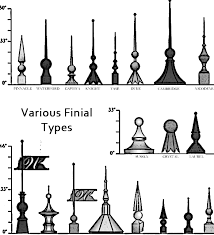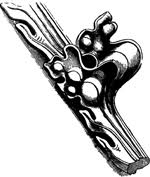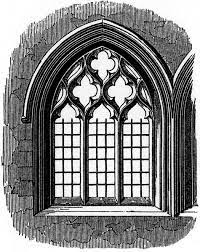Exam 2: Question List 9 and 10
0.0(0)
Card Sorting
1/116
Earn XP
Description and Tags
Study Analytics
Name | Mastery | Learn | Test | Matching | Spaced |
|---|
No study sessions yet.
117 Terms
1
New cards
Façade of St. Pantaleon
Cologne, Germany c. 980 AD (Romanesque, Early Medieval Western Europe)
2
New cards
Façade of St. Pantaleon is located in:
Germany
3
New cards
The dates for the Romanesque style are approximately:
900 - 1100
4
New cards
Who was Saint Pantaleon?
A Christian martyr
5
New cards
The Romanesque architectural style that began to emerge around 900 AD draws upon the architectural forms of:
Greco-Roman buildings
6
New cards
The decoration on the upper part of Façade of St. Pantaleon, above the arched entrance, resembles:
A Classical temple front
7
New cards
Which of the following best describes the Romanesque style?
The Romanesque style bears some resemblance to ancient Greco-Roman architecture, but differs considerably from the classical style in shape and proportions
8
New cards
The bands of small, decorative arches that appear just below the two strips of horizontal molding on the façade of St. Pantaleon are called:
Lombard bands
9
New cards
Façade of San Miniato al Monte
Florence, Italy, begun 1013 A.D.
(Romanesque, Early Medieval Western Europe)
(Romanesque, Early Medieval Western Europe)
10
New cards
Façade of San Miniato al Monte is located in:
Italy
11
New cards
Façade of San Miniato al Monte is dedicated to:
A Christian martyr
12
New cards
What is characteristically Romanesque about the style of the façade of San Miniato al Monte?
half columns, corinthian columns, rounded arches, no frieze
13
New cards
The complex, interwoven patterns that decorate this façade are most reminiscent of:
Medieval manuscript illumination
14
New cards
In what sense is the façade of San Miniato al Monte comparable to the Portrait of A Roman General statue that we studied several lectures ago?
Both blend together stylistic characteristics from separate artistic traditions
15
New cards
The mosaic depicting Christ, the Virgin Mary, and Saint Miniato which appears in the center of the upper portion of this façade is in which style?
Byzantine
16
New cards
Many churches from the Romanesque period, like this one, have a split-level nave—what was the function of the two levels?
Upper level: altar for saying Mass; lower level: crypt containing relics of a saint
17
New cards
A reliquary is:
An object used to contain and display a relic
18
New cards
Cathedral of Notre Dame
Reims, France, begun 1211(Gothic, High Medieval Western Europe)
19
New cards
Which of the following did NOT occur during the age of the Gothic Cathedrals?
A downturn in commercial activity weakened the European economy, making the construction of large-scale architecture impossible
20
New cards
The Gothic style first appeared in:
France
21
New cards
Who first applied the term "Gothic" to the architecture of the High Middle Ages?
Renaissance Italians
22
New cards
What opinion did the people who first applied the term "Gothic" to High Medieval architecture hold regarding that architecture?
They regarded it as barbaric, because it was not done in the ancient Greco-Roman style
23
New cards
The Cathedral of Notre Dame in Reims is dedicated to:
The Virgin Mary
24
New cards
The words "Notre Dame" mean:
Our Lady
25
New cards
Which of the follow is NOT a characteristic element in Gothic ornament?
Lombard bands
26
New cards
What's a finial?

27
New cards
What's a crocket?

28
New cards
What's a tracery?

29
New cards
Cathedral of Notre Dame
Chartres, France, 1145-1220 (Gothic, High Medieval Western Europe)
30
New cards
Given that this church has pointed arches, finials, and tracery, you know that its style is:
Gothic
31
New cards
This church is dedicated to:
The Virgin Mary
32
New cards
Which architectural styles is NOT among the three most prominent and influential styles in the history of Western architecture?
The Egyptian style
33
New cards
What relic is housed in this church?
A piece of the Virgin Mary's clothing
34
New cards
What does the relic housed in this church have to do with the financing of the church's construction?
The relic was sent on a tour of the area surrounding Chartres, and people were charged money to view it
35
New cards
The interiors of Gothic churches are typically ornamented by:
Stained glass
36
New cards
A "rose window", circular in shape, with lots of tracery and stained glass, is a common feature of:
Gothic churches
37
New cards
An architectural structure used in Gothic churches to permit more wall space to be dedicated to windows is the:
Flying buttress
38
New cards
In common with many Christian churches of the basilica type, the plan of the Cathedral of Chartres shows that the building has:
A nave, A transept, An apse (all of the above)
39
New cards
Virgin and Child
c. 1339, France (Gothic, Medieval Western Europe)
40
New cards
This statue was a gift to a cathedral from:
The queen of France
41
New cards
Which of the authors from your readings would be most likely to object to this statue?
Bernard of Clairvaux
42
New cards
This object serves as a reliquary for:
a strand of the Virgin Mary's hair
43
New cards
The four narrative images on the base of this statue represent scenes from:
The Passion of Christ
44
New cards
This statue seems to mark a return in art to:
The beauty of the human body, naturalistically depicted
45
New cards
What does the phrase "Gothic sway" refer to?
A graceful curvature characteristic of Gothic depictions of the human body
46
New cards
Abraham, Sarah, and the Three Strangers
from the Psalter of Saint Louis, c. 1260, Paris
(Gothic, Medieval Western Europe)
(Gothic, Medieval Western Europe)
47
New cards
Abraham, Sarah, and the Three Strangers illuminated manuscript belonged to:
The king of France
48
New cards
Which of these cities was the European capital of illuminated manuscript production in the later middle ages?
Paris
49
New cards
What is biblical "typology?”
An interpretative practice in which passages from the Old Testament are understood as allusions to the New Testament and the coming of Christ
50
New cards
The intertwined forms on the borders of Abraham, Sarah, and the Three Strangers recall the decorative elements on:
The Book of Kells
51
New cards
The "Gothic sway" of the angel on the left side of Abraham, Sarah, and the Three Strangers is closest to the pose of:
The gold statue of the Virgin and Child, donated to a French cathedral by the queen of France
52
New cards
Christians regarded the “three strangers” in Abraham, Sarah, and the Three Strangers Old Testament story as a reference to which Christian doctrine or concept?
The Trinity
53
New cards
Cimabue, Madonna Enthroned, and Giotto, Madonna Enthroned
Florence, Italy, c. 1290 and 1310
54
New cards
When did Giorgio Vasari live?
in the 1300’s
55
New cards
Cimabue and Giotto are from:
Italy
56
New cards
Today these two paintings by Cimabue and Giotto are held in:
The Uffizi Museum, in Florence
57
New cards
In the early 1300s, when Cimabue and Giotto made their paintings of the Madonna Enthroned, the city of Florence was:
One of the top two or three largest and wealthiest cities in Europe, thanks to the city's predominance in banking, as well as the industries of wool and silk manufacturing
58
New cards
In the early fourteenth century (i.e. early 1300s), when Ciambue and Giotto made their paintings of the Madonna Enthroned, the city of Florence was:
A republic
59
New cards
Early Modern 'republics' were governed by:
a rotating committee of citizens, who must meet certain property or professional requirements in order to serve in the government
60
New cards
Early Modern 'principalities' were governed by:
a single hereditary ruler, belonging to an aristocratic family
61
New cards
The four figures at the bottom of the throne in Cimabue's Madonna Enthroned are:
Old Testament prophets
62
New cards
The medium of Cimabue, Madonna Enthroned, and Giotto, Madonna Enthroned:
tempera on panel
63
New cards
Altarpieces are a category of religious image most closely associated with which of the following?
The Eucharist
64
New cards
Where would altarpieces like these, by Cimabue and Giotto, originally have be located?
On altars in churches
65
New cards
What was the main function of an altarpiece?
To provide people who are taking the eucharist at Mass with an image to help them focus on the eucharist's significance for human salvation
66
New cards
The miraculous process by which the bread and wine is transformed into the flesh and blood of Jesus during the Christian mass is called:
transubstantiation
67
New cards
Compared to Cimabue's Madonna Enthroned, Giotto's version is:
later in date and more naturalistic
68
New cards
In Giotto's version, the throne in which the Virgin Mary's sits is closest in style to:
Gothic architecture
69
New cards
Who is Dante Alighieri?
An Italian poet of who wrote the Divine Comedy
70
New cards
The Divine Comedy is a long poem describing Dante's voyage:
through Hell, Purgatory and Paradise
71
New cards
What is the point of Dante's reference in his Divine Comedy to the painters Giotto and Cimabue?
Great artists are in danger of being proud of their art, and since pride is a sin, it can result in the artist having to spend time in Purgatory after death
72
New cards
Giotto, Scenes from the Lives of Mary and Jesus and The Last Judgment
Fresco, Scrovegni Chapel, Padua, Italy, 1305
73
New cards
The word "Scrovegni" in the name "Scrovegni Chapel" refers to:
The person who commissioned the fresco cycle inside the chapel
74
New cards
The person who commissioned these frescos (Giotto, Scenes from the Lives of Mary and Jesus and The Last Judgment) was:
A banker
75
New cards
In the 'Inferno' section of Dante's Divine Comedy, what sin is Enrico Scrovegni's father being punished for?
Usury (lending money at interest)
76
New cards
Giotto's paintings in the Scrovegni chapel are executed in what medium?
fresco mural
77
New cards
In connection to visual art, the term giornata means
the patch of moist plaster that a fresco painter plans to paint in a day
78
New cards
Which part of the Bible recounts the life of Jesus of Nazareth?
The New Testament
79
New cards
What takes place at the Last Supper?
Jesus tells his disciples that they will never eat with him again, as he will soon die.
Jesus offers bread and wine to his disciples, forming the basis for the Christian ritual of the Eucharist.
Jesus tells his disciples that one of them will betray him.
Jesus offers bread and wine to his disciples, forming the basis for the Christian ritual of the Eucharist.
Jesus tells his disciples that one of them will betray him.
80
New cards
Compared to art in the Byzantine style, Giotto’s style is:
more naturalistic and more expressive
81
New cards
The story of the "Last Judgment" is told in which book of the Bible?
The Book of Revelation
82
New cards
In Christian theology, what is the "Last Judgment"?
A future event prophesized in the Bible, when the earth will be destroyed, and all human souls will be definitively assigned a place in either paradise or hell
83
New cards
In representations of the Last Judgment, the damned are placed:
On Christ's left
84
New cards
In representations of the Last Judgment, the blessed are placed:
On Christ's right
85
New cards
In Giotto's scene of Hell, what sin is the person hanging from his tongue probably being punished for?
Blasphemy (swearing against God)
86
New cards
In Giotto's scene of Hell, what sin are the people hanging from their genitals probably being punished for?
Lust (sexual desire)
87
New cards
In what way does Giotto's Last Judgment appear to contradict Jesus's words in the Bible?
Giotto shows poor people entering heaven last, after the wealthy ones
88
New cards
What is Enrico Scrovegni shown doing where he appears in Giotto's Last Judgment scene?
donating a building to holy figures
89
New cards
Cathedral of Florence (Duomo) with Filippo Brunelleschi’s Dome
completed 1436
90
New cards
Which of the following best defines the Renaissance?
The Renaissance was a period in which, starting in Italy and spreading outward across Europe, artists, writers and other culturally influential people began to take the culture of ancient Greece and Rome as a guide and a standard of excellence
91
New cards
In what Italian city, toward the end of the High Middle Ages, did the new interest in ancient Greco-Roman antiquity that we call the "Renaissance" first appear?
Florence
92
New cards
What is it that makes the 15th-century Italian architect Filarete feel "reborn"?
The sight of Classical-style architecture
93
New cards
In the context of Renaissance-era culture, a 'humanist' is:
A scholar of literature, history, languages and philosophy whose studies focus on ancient Greco-Roman culture
94
New cards
Which of the following qualities make Leon Battista Alberti a “humanist?”
Alberti was a writer who studied and imitated the written works of ancient Greco-Roman authors
95
New cards
In the Introduction to his Treatise on Painting (which you have read) Leon Battista Alberti praised the city of Florence for:
Reviving the arts, which Alberti believed had been lost since antiquity
96
New cards
In Italian, the word duomo means:
'Cathedral'
97
New cards
Around when was the duomo, or Cathedral, of Florence begun?
Around 1400
98
New cards
What is Piazza della Signoria?
A town square in the city of Florence, where the headquarters of the Florentine government is located
99
New cards
What is Palazzo della Signoria?
A large building in the city of Florence, which served as the headquarters of the Florentine government
100
New cards
Who was the architect who designed the dome on the duomo of Florence?
Filippo Brunelleschi